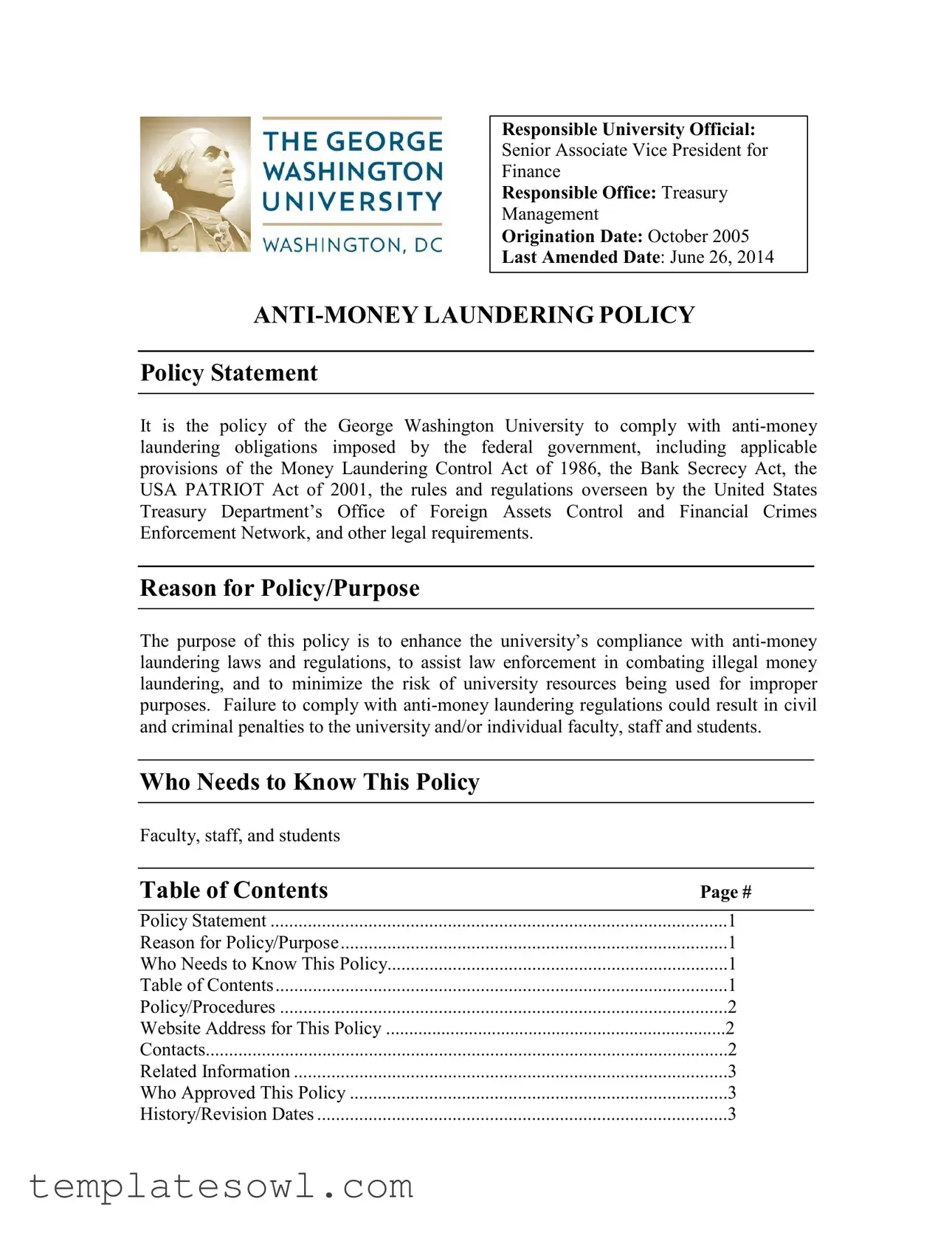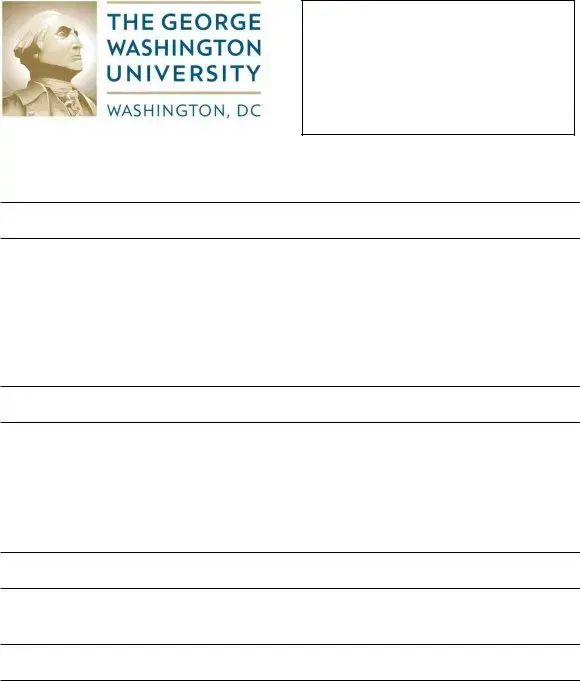What is the Aml Program form?
The Aml Program form outlines the George Washington University’s policies and procedures for complying with anti-money laundering laws. Established to prevent laundering activities, it emphasizes the responsibilities of faculty, staff, and students in detecting and reporting suspicious activities.
Who is responsible for the Aml Program?
The Senior Associate Vice President for Finance oversees the Aml Program. They ensure compliance with anti-money laundering obligations and coordinate training and procedures within the university.
What are the key components of the Aml Program?
The Aml Program includes several crucial elements, such as procedures for verifying customer identification, guidelines for suspicious activity reports, and the training of university personnel. An independent review mechanism is also in place to monitor compliance and effectiveness.
Why does the university have an Aml Program?
This program aims to comply with federal anti-money laundering laws, enhance law enforcement efforts, and reduce the risk of university resources being misused. Non-compliance could lead to serious penalties for the university and individuals involved.
Who needs to be aware of the Aml Program?
All faculty, staff, and students at George Washington University should be aware of the Aml Program. Understanding its requirements helps ensure compliance and safeguards against potential illegal activities.
How can someone report suspicious activities related to money laundering?
Any concerns regarding suspicious transactions should be reported to the university’s Treasury Management Office at 202-994-0985. Prompt reporting can help prevent and address suspicious activities effectively.
What happens if the university fails to comply with anti-money laundering laws?
Failure to comply with these laws can result in both civil and criminal penalties. This could affect the university’s financial standing and put individuals at risk of legal consequences.
Where can I find more information about the Aml Program?
Additional information about the Aml Program, including policy details and related resources, can be found on the George Washington University policies website. For specific inquiries, contact the Treasury Management Office.



